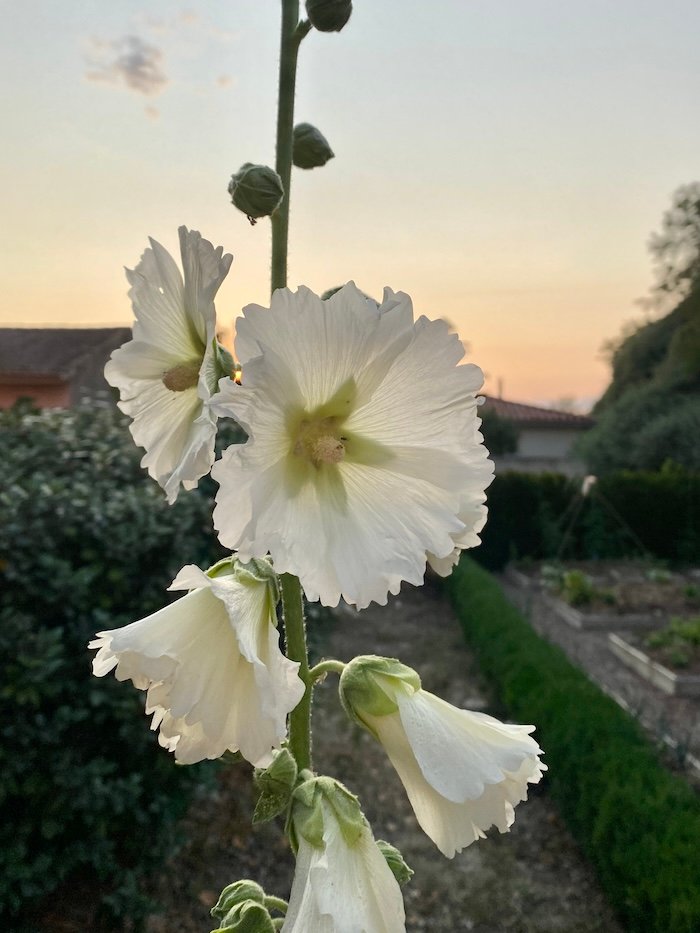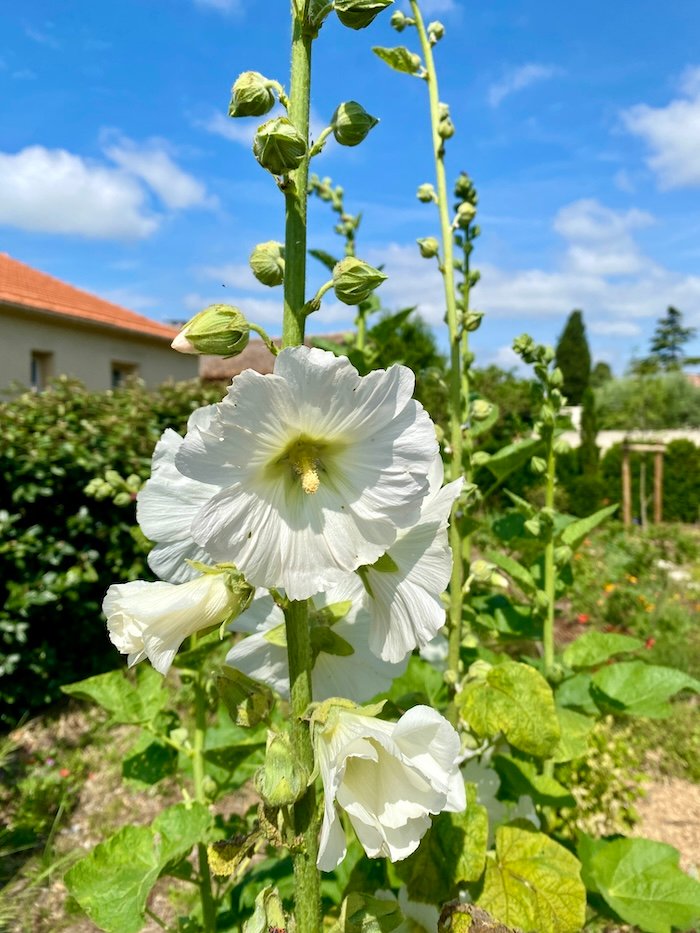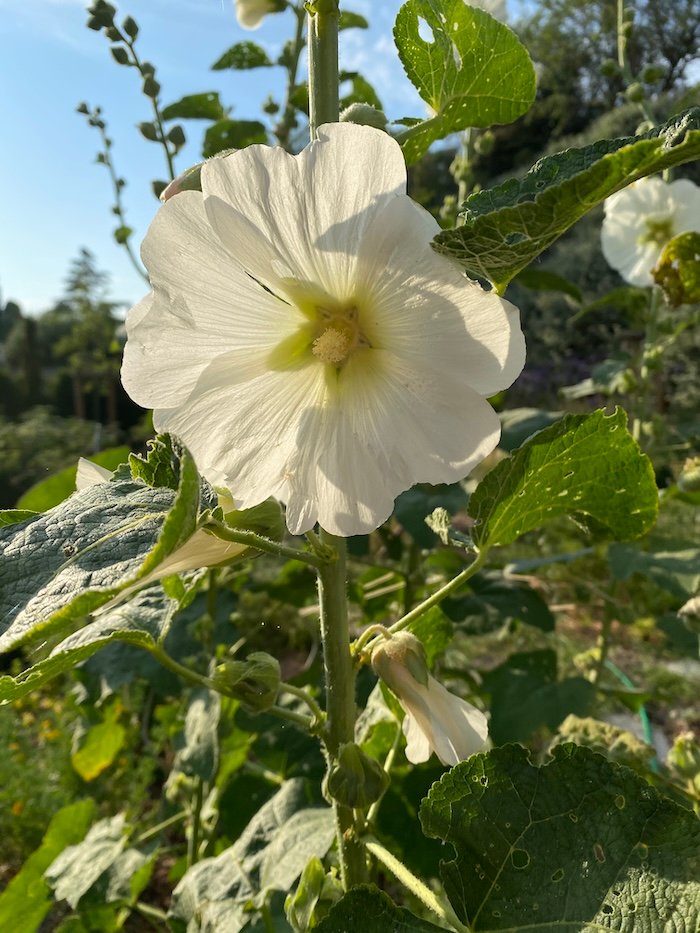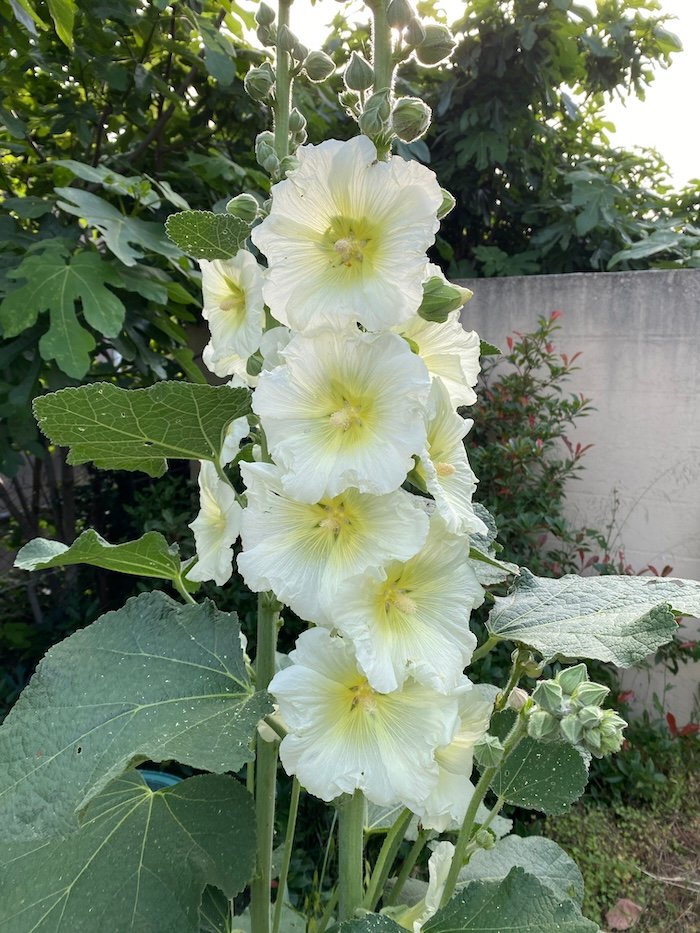Alcea rosea (Hollyhocks in English or Rose trémière in French) are another example for plants that – in my experience – grow best if left alone to do their thing. They like to sow themselves where they please and need nothing besides maybe some support against the wind in their quest for the sky. Not even water (although of course they do even better with a bit of deep watering every now and then).
I’ve never had better and more healthy hollyhocks than in this garden here. They come from English garden seeds, gifted to the pre-pre-possessor of our garden by her mother in law – and they have been reseeding themselves for years.
This year I’ve had even more of the white ones as well as a new variety in a sort of lemony white in another part of the garden. It may actually be an Alcea rugosa variety that had found my garden in mysterious ways. My Hollyhocks bloom from May through the end of July on stalks that are between two and three meters high. And they produce thousands of seeds to scatter or give away. The plants are a favorite with all kinds of beetles and bugs, sucking on fruit and stems, without any actual damage to the flowers or leaves.
Alcea rosea grows in just about any quality of soil. According to Wikipedia lighter colors prefer clay and darker red tones favor sandy soils. Hollyhocks are susceptible to rust fungus which is why I had stopped growing them in my previous gardens in the more humid North. It was just too frustrating to see all the leaves succumb to ugly orange pustules and fall off in a matter of a few weeks. This year one of the white ones had a bit of rust as well but it never progressed far and all the others next to it remained healthy. Apparently the varieties Alcea ficifolia and Alcea rugosa are rust-resistant.




Leave a Reply